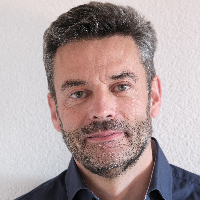Preprint
Article
Evidence that Homeostatic Sleep Regulation Depends on Ambient Illuminance Levels
Altmetrics
Downloads
346
Views
642
Comments
0
A peer-reviewed article of this preprint also exists.
Submitted:
11 September 2019
Posted:
12 September 2019
You are already at the latest version
Alerts
Abstract
We examined whether the ambient illuminance during extended wakefulness modulates the homeostatic increase in human deep sleep [i.e. slow wave sleep (SWS) and electroencephalographic (EEG) slow-wave activity (SWA)] in healthy young and older volunteers. Thirty-eight young and older participants underwent 40 hours of extended wakefulness [i.e. sleep deprivation (SD)] once under dim light (DL: 8 lux, 2800K), and once under either white light (WL: 250 lux, 2800K) or blue-enriched white light (BL: 250 lux, 9000K) exposure. Subjective sleepiness was assessed hourly and polysomnography was quantified during the baseline night prior to the 40-h SD and during the subsequent recovery night. Both the young and older participants responded with a higher homeostatic sleep response to 40-h SD after WL and BL than after DL. This was indexed by a significantly faster intra-night accumulation of SWS and a significantly higher response in relative EEG SWA during the recovery night after WL and BL than after DL for both age groups. No significant differences were observed between the WL and BL condition for these two particular SWS and SWA measures. Subjective sleepiness ratings during the 40-h SD were significantly reduced under both WL and BL compared to DL, but were not significantly associated with markers of sleep homeostasis in both age groups. Our data indicate that not only the duration of prior wakefulness, but also the experienced illuminance during wakefulness affects homeostatic sleep regulation in humans. Thus, working extended hours under low illuminance may negatively impact subsequent sleep intensity in humans.
Keywords:
Subject: Social Sciences - Behavior Sciences
Copyright: This open access article is published under a Creative Commons CC BY 4.0 license, which permit the free download, distribution, and reuse, provided that the author and preprint are cited in any reuse.
MDPI Initiatives
Important Links
© 2024 MDPI (Basel, Switzerland) unless otherwise stated






